spring6-IOC容器
IOC容器
- 1、IoC容器
- 1.1、控制反转(IoC)
- 1.2、依赖注入
- 1.3、IoC容器在Spring的实现
- 2、基于XML管理Bean
- 2.1、搭建子模块spring6-ioc-xml
- 2.2、实验一:获取bean
- ①方式一:根据id获取
- ②方式二:根据类型获取
- ③方式三:根据id和类型
- ④注意的地方
- ⑤扩展知识
- 2.3、实验二:依赖注入之setter注入
- 2.4、实验三:依赖注入之构造器注入
- 2.5、实验四:特殊值处理
- ①字面量赋值
- ②null值
- ③xml实体
- ④CDATA节
- 2.6、实验五:为对象类型属性赋值
- 方式一:引用外部bean
- 方式二:内部bean
- 方式三:级联属性赋值
- 2.7、实验六:为数组类型属性赋值
- 2.8、实验七:为集合类型属性赋值
- ①为List集合类型属性赋值
- ②为Map集合类型属性赋值
- ③引用集合类型的bean
- 2.9、实验八:p命名空间
- 2.10、实验九:引入外部属性文件
- 2.11、实验十:bean的作用域
- 2.12、实验十一:bean生命周期
- 2.13、实验十二:FactoryBean
- 2.14、实验十三:基于xml自动装配
- 3、基于注解管理Bean(☆)
- 3.1、搭建子模块spring6-ioc-annotation
- 3.2、开启组件扫描
- 3.3、使用注解定义 Bean
- 3.4、实验一:@Autowired注入
- ①场景一:属性注入
- ②场景二:set注入
- ③场景三:构造方法注入
- ④场景四:形参上注入
- ⑤场景五:只有一个构造函数,无注解
- ⑥场景六:@Autowired注解和@Qualifier注解联合
- 3.5、实验二:@Resource注入
- ①场景一:根据name注入
- ②场景二:name未知注入
- ③场景三 其他情况
- 3.6、Spring全注解开发
IOC 是 Inversion of Control 的简写,译为“控制反转”,它不是一门技术,而是一种设计思想,是一个重要的面向对象编程法则,能够指导我们如何设计出松耦合、更优良的程序。
Spring 通过 IoC 容器来管理所有 Java 对象的实例化和初始化,控制对象与对象之间的依赖关系。我们将由 IoC 容器管理的 Java 对象称为 Spring Bean,它与使用关键字 new 创建的 Java 对象没有任何区别。
IoC 容器是 Spring 框架中最重要的核心组件之一,它贯穿了 Spring 从诞生到成长的整个过程。
1、IoC容器
1.1、控制反转(IoC)
-
控制反转是一种思想。
-
控制反转是为了降低程序耦合度,提高程序扩展力。
-
控制反转,反转的是什么?
-
- 将对象的创建权利交出去,交给第三方容器负责。
- 将对象和对象之间关系的维护权交出去,交给第三方容器负责。
-
控制反转这种思想如何实现呢?
-
- DI(Dependency Injection):依赖注入
1.2、依赖注入
DI(Dependency Injection):依赖注入,依赖注入实现了控制反转的思想。
依赖注入:
- 指Spring创建对象的过程中,将对象依赖属性通过配置进行注入
依赖注入常见的实现方式包括两种:
- 第一种:set注入
- 第二种:构造注入
所以结论是:IOC 就是一种控制反转的思想, 而 DI 是对IoC的一种具体实现。
Bean管理说的是:Bean对象的创建,以及Bean对象中属性的赋值(或者叫做Bean对象之间关系的维护)。
1.3、IoC容器在Spring的实现
Spring 的 IoC 容器就是 IoC思想的一个落地的产品实现。IoC容器中管理的组件也叫做 bean。在创建 bean 之前,首先需要创建IoC 容器。Spring 提供了IoC 容器的两种实现方式:
①BeanFactory
这是 IoC 容器的基本实现,是 Spring 内部使用的接口。面向 Spring 本身,不提供给开发人员使用。
②ApplicationContext
BeanFactory 的子接口,提供了更多高级特性。面向 Spring 的使用者,几乎所有场合都使用 ApplicationContext 而不是底层的 BeanFactory。
③ApplicationContext的主要实现类
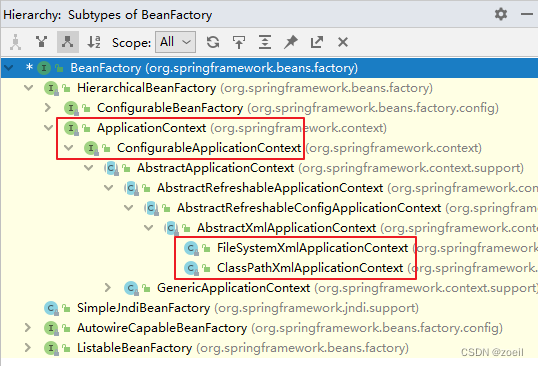
| 类型名 | 简介 |
|---|---|
| ClassPathXmlApplicationContext | 通过读取类路径下的 XML 格式的配置文件创建 IOC 容器对象 |
| FileSystemXmlApplicationContext | 通过文件系统路径读取 XML 格式的配置文件创建 IOC 容器对象 |
| ConfigurableApplicationContext | ApplicationContext 的子接口,包含一些扩展方法 refresh() 和 close() ,让 ApplicationContext 具有启动、关闭和刷新上下文的能力。 |
| WebApplicationContext | 专门为 Web 应用准备,基于 Web 环境创建 IOC 容器对象,并将对象引入存入 ServletContext 域中。 |
2、基于XML管理Bean
2.1、搭建子模块spring6-ioc-xml
①搭建模块
搭建方式如:spring-first
②引入配置文件
引入spring-first模块配置文件:beans.xml、log4j2.xml
③添加依赖
<dependencies><!--spring context依赖--><!--当你引入Spring Context依赖之后,表示将Spring的基础依赖引入了--><dependency><groupId>org.springframework</groupId><artifactId>spring-context</artifactId><version>6.0.3</version></dependency><!--junit5测试--><dependency><groupId>org.junit.jupiter</groupId><artifactId>junit-jupiter-api</artifactId><version>5.3.1</version></dependency><!--log4j2的依赖--><dependency><groupId>org.apache.logging.log4j</groupId><artifactId>log4j-core</artifactId><version>2.19.0</version></dependency><dependency><groupId>org.apache.logging.log4j</groupId><artifactId>log4j-slf4j2-impl</artifactId><version>2.19.0</version></dependency>
</dependencies>
④引入java类
引入spring-first模块java及test目录下实体类
package com.atguigu.spring6.bean;public class HelloWorld {public HelloWorld() {System.out.println("无参数构造方法执行");}public void sayHello(){System.out.println("helloworld");}
}package com.atguigu.spring6.bean;import org.junit.jupiter.api.Test;
import org.slf4j.Logger;
import org.slf4j.LoggerFactory;
import org.springframework.context.ApplicationContext;
import org.springframework.context.support.ClassPathXmlApplicationContext;public class HelloWorldTest {private Logger logger = LoggerFactory.getLogger(HelloWorldTest.class);@Testpublic void testHelloWorld(){}
}
2.2、实验一:获取bean
①方式一:根据id获取
由于 id 属性指定了 bean 的唯一标识,所以根据 bean 标签的 id 属性可以精确获取到一个组件对象。上个实验中我们使用的就是这种方式。
②方式二:根据类型获取
@Test
public void testHelloWorld1(){ApplicationContext ac = new ClassPathXmlApplicationContext("beans.xml");HelloWorld bean = ac.getBean(HelloWorld.class);bean.sayHello();
}
③方式三:根据id和类型
@Test
public void testHelloWorld2(){ApplicationContext ac = new ClassPathXmlApplicationContext("beans.xml");HelloWorld bean = ac.getBean("helloworld", HelloWorld.class);bean.sayHello();
}
④注意的地方
当根据类型获取bean时,要求IOC容器中指定类型的bean有且只能有一个
当IOC容器中一共配置了两个:
<bean id="helloworldOne" class="com.atguigu.spring6.bean.HelloWorld"></bean>
<bean id="helloworldTwo" class="com.atguigu.spring6.bean.HelloWorld"></bean>
根据类型获取时会抛出异常:
org.springframework.beans.factory.NoUniqueBeanDefinitionException: No qualifying bean of type ‘com.atguigu.spring6.bean.HelloWorld’ available: expected single matching bean but found 2: helloworldOne,helloworldTwo
⑤扩展知识
如果组件类实现了接口,根据接口类型可以获取 bean 吗?
可以,前提是bean唯一
如果一个接口有多个实现类,这些实现类都配置了 bean,根据接口类型可以获取 bean 吗?
不行,因为bean不唯一
结论
根据类型来获取bean时,在满足bean唯一性的前提下,其实只是看:『对象 instanceof 指定的类型』的返回结果,只要返回的是true就可以认定为和类型匹配,能够获取到。
java中,instanceof运算符用于判断前面的对象是否是后面的类,或其子类、实现类的实例。如果是返回true,否则返回false。也就是说:用instanceof关键字做判断时, instanceof 操作符的左右操作必须有继承或实现关系
2.3、实验二:依赖注入之setter注入
①创建学生类Student
package com.atguigu.spring6.bean;public class Student {private Integer id;private String name;private Integer age;private String sex;public Student() {}public Integer getId() {return id;}public void setId(Integer id) {this.id = id;}public String getName() {return name;}public void setName(String name) {this.name = name;}public Integer getAge() {return age;}public void setAge(Integer age) {this.age = age;}public String getSex() {return sex;}public void setSex(String sex) {this.sex = sex;}@Overridepublic String toString() {return "Student{" +"id=" + id +", name='" + name + '\'' +", age=" + age +", sex='" + sex + '\'' +'}';}}
②配置bean时为属性赋值
spring-di.xml
<bean id="studentOne" class="com.atguigu.spring6.bean.Student"><!-- property标签:通过组件类的setXxx()方法给组件对象设置属性 --><!-- name属性:指定属性名(这个属性名是getXxx()、setXxx()方法定义的,和成员变量无关) --><!-- value属性:指定属性值 --><property name="id" value="1001"></property><property name="name" value="张三"></property><property name="age" value="23"></property><property name="sex" value="男"></property>
</bean>
③测试
@Test
public void testDIBySet(){ApplicationContext ac = new ClassPathXmlApplicationContext("spring-di.xml");Student studentOne = ac.getBean("studentOne", Student.class);System.out.println(studentOne);
}
2.4、实验三:依赖注入之构造器注入
①在Student类中添加有参构造
public Student(Integer id, String name, Integer age, String sex) {this.id = id;this.name = name;this.age = age;this.sex = sex;
}
②配置bean
spring-di.xml
<bean id="studentTwo" class="com.atguigu.spring6.bean.Student"><constructor-arg value="1002"></constructor-arg><constructor-arg value="李四"></constructor-arg><constructor-arg value="33"></constructor-arg><constructor-arg value="女"></constructor-arg>
</bean>
注意:
constructor-arg标签还有两个属性可以进一步描述构造器参数:
- index属性:指定参数所在位置的索引(从0开始)
- name属性:指定参数名
③测试
@Test
public void testDIByConstructor(){ApplicationContext ac = new ClassPathXmlApplicationContext("spring-di.xml");Student studentOne = ac.getBean("studentTwo", Student.class);System.out.println(studentOne);
}
2.5、实验四:特殊值处理
①字面量赋值
什么是字面量?
int a = 10;
声明一个变量a,初始化为10,此时a就不代表字母a了,而是作为一个变量的名字。当我们引用a的时候,我们实际上拿到的值是10。
而如果a是带引号的:‘a’,那么它现在不是一个变量,它就是代表a这个字母本身,这就是字面量。所以字面量没有引申含义,就是我们看到的这个数据本身。
<!-- 使用value属性给bean的属性赋值时,Spring会把value属性的值看做字面量 -->
<property name="name" value="张三"/>
②null值
<property name="name"><null />
</property>
注意:
<property name="name" value="null"></property>以上写法,为name所赋的值是字符串null
③xml实体
<!-- 小于号在XML文档中用来定义标签的开始,不能随便使用 -->
<!-- 解决方案一:使用XML实体来代替 -->
<property name="expression" value="a < b"/>
④CDATA节
<property name="expression"><!-- 解决方案二:使用CDATA节 --><!-- CDATA中的C代表Character,是文本、字符的含义,CDATA就表示纯文本数据 --><!-- XML解析器看到CDATA节就知道这里是纯文本,就不会当作XML标签或属性来解析 --><!-- 所以CDATA节中写什么符号都随意 --><value><![CDATA[a < b]]></value>
</property>
2.6、实验五:为对象类型属性赋值
①创建班级类Clazz
package com.atguigu.spring6.beanpublic class Clazz {private Integer clazzId;private String clazzName;public Integer getClazzId() {return clazzId;}public void setClazzId(Integer clazzId) {this.clazzId = clazzId;}public String getClazzName() {return clazzName;}public void setClazzName(String clazzName) {this.clazzName = clazzName;}@Overridepublic String toString() {return "Clazz{" +"clazzId=" + clazzId +", clazzName='" + clazzName + '\'' +'}';}public Clazz() {}public Clazz(Integer clazzId, String clazzName) {this.clazzId = clazzId;this.clazzName = clazzName;}
}
②修改Student类
在Student类中添加以下代码:
private Clazz clazz;public Clazz getClazz() {return clazz;
}public void setClazz(Clazz clazz) {this.clazz = clazz;
}
方式一:引用外部bean
配置Clazz类型的bean:
<bean id="clazzOne" class="com.atguigu.spring6.bean.Clazz"><property name="clazzId" value="1111"></property><property name="clazzName" value="财源滚滚班"></property>
</bean>
为Student中的clazz属性赋值:
<bean id="studentFour" class="com.atguigu.spring6.bean.Student"><property name="id" value="1004"></property><property name="name" value="赵六"></property><property name="age" value="26"></property><property name="sex" value="女"></property><!-- ref属性:引用IOC容器中某个bean的id,将所对应的bean为属性赋值 --><property name="clazz" ref="clazzOne"></property>
</bean>
错误演示:
<bean id="studentFour" class="com.atguigu.spring6.bean.Student"><property name="id" value="1004"></property><property name="name" value="赵六"></property><property name="age" value="26"></property><property name="sex" value="女"></property><property name="clazz" value="clazzOne"></property>
</bean>
如果错把ref属性写成了value属性,会抛出异常: Caused by: java.lang.IllegalStateException: Cannot convert value of type ‘java.lang.String’ to required type ‘com.atguigu.spring6.bean.Clazz’ for property ‘clazz’: no matching editors or conversion strategy found
意思是不能把String类型转换成我们要的Clazz类型,说明我们使用value属性时,Spring只把这个属性看做一个普通的字符串,不会认为这是一个bean的id,更不会根据它去找到bean来赋值
方式二:内部bean
<bean id="studentFour" class="com.atguigu.spring6.bean.Student"><property name="id" value="1004"></property><property name="name" value="赵六"></property><property name="age" value="26"></property><property name="sex" value="女"></property><property name="clazz"><!-- 在一个bean中再声明一个bean就是内部bean --><!-- 内部bean只能用于给属性赋值,不能在外部通过IOC容器获取,因此可以省略id属性 --><bean id="clazzInner" class="com.atguigu.spring6.bean.Clazz"><property name="clazzId" value="2222"></property><property name="clazzName" value="远大前程班"></property></bean></property>
</bean>
方式三:级联属性赋值
<bean id="studentFour" class="com.atguigu.spring6.bean.Student"><property name="id" value="1004"></property><property name="name" value="赵六"></property><property name="age" value="26"></property><property name="sex" value="女"></property><property name="clazz" ref="clazzOne"></property><property name="clazz.clazzId" value="3333"></property><property name="clazz.clazzName" value="最强王者班"></property>
</bean>
2.7、实验六:为数组类型属性赋值
①修改Student类
在Student类中添加以下代码:
private String[] hobbies;public String[] getHobbies() {return hobbies;
}public void setHobbies(String[] hobbies) {this.hobbies = hobbies;
}
②配置bean
<bean id="studentFour" class="com.atguigu.spring.bean6.Student"><property name="id" value="1004"></property><property name="name" value="赵六"></property><property name="age" value="26"></property><property name="sex" value="女"></property><!-- ref属性:引用IOC容器中某个bean的id,将所对应的bean为属性赋值 --><property name="clazz" ref="clazzOne"></property><property name="hobbies"><array><value>抽烟</value><value>喝酒</value><value>烫头</value></array></property>
</bean>
2.8、实验七:为集合类型属性赋值
①为List集合类型属性赋值
在Clazz类中添加以下代码:
private List<Student> students;public List<Student> getStudents() {return students;
}public void setStudents(List<Student> students) {this.students = students;
}
配置bean:
<bean id="clazzTwo" class="com.atguigu.spring6.bean.Clazz"><property name="clazzId" value="4444"></property><property name="clazzName" value="Javaee0222"></property><property name="students"><list><ref bean="studentOne"></ref><ref bean="studentTwo"></ref><ref bean="studentThree"></ref></list></property>
</bean>
若为Set集合类型属性赋值,只需要将其中的list标签改为set标签即可
②为Map集合类型属性赋值
创建教师类Teacher:
package com.atguigu.spring6.bean;
public class Teacher {private Integer teacherId;private String teacherName;public Integer getTeacherId() {return teacherId;}public void setTeacherId(Integer teacherId) {this.teacherId = teacherId;}public String getTeacherName() {return teacherName;}public void setTeacherName(String teacherName) {this.teacherName = teacherName;}public Teacher(Integer teacherId, String teacherName) {this.teacherId = teacherId;this.teacherName = teacherName;}public Teacher() {}@Overridepublic String toString() {return "Teacher{" +"teacherId=" + teacherId +", teacherName='" + teacherName + '\'' +'}';}
}
在Student类中添加以下代码:
private Map<String, Teacher> teacherMap;public Map<String, Teacher> getTeacherMap() {return teacherMap;
}public void setTeacherMap(Map<String, Teacher> teacherMap) {this.teacherMap = teacherMap;
}
配置bean:
<bean id="teacherOne" class="com.atguigu.spring6.bean.Teacher"><property name="teacherId" value="10010"></property><property name="teacherName" value="大宝"></property>
</bean><bean id="teacherTwo" class="com.atguigu.spring6.bean.Teacher"><property name="teacherId" value="10086"></property><property name="teacherName" value="二宝"></property>
</bean><bean id="studentFour" class="com.atguigu.spring6.bean.Student"><property name="id" value="1004"></property><property name="name" value="赵六"></property><property name="age" value="26"></property><property name="sex" value="女"></property><!-- ref属性:引用IOC容器中某个bean的id,将所对应的bean为属性赋值 --><property name="clazz" ref="clazzOne"></property><property name="hobbies"><array><value>抽烟</value><value>喝酒</value><value>烫头</value></array></property><property name="teacherMap"><map><entry><key><value>10010</value></key><ref bean="teacherOne"></ref></entry><entry><key><value>10086</value></key><ref bean="teacherTwo"></ref></entry></map></property>
</bean>
③引用集合类型的bean
<!--list集合类型的bean-->
<util:list id="students"><ref bean="studentOne"></ref><ref bean="studentTwo"></ref><ref bean="studentThree"></ref>
</util:list>
<!--map集合类型的bean-->
<util:map id="teacherMap"><entry><key><value>10010</value></key><ref bean="teacherOne"></ref></entry><entry><key><value>10086</value></key><ref bean="teacherTwo"></ref></entry>
</util:map>
<bean id="clazzTwo" class="com.atguigu.spring6.bean.Clazz"><property name="clazzId" value="4444"></property><property name="clazzName" value="Javaee0222"></property><property name="students" ref="students"></property>
</bean>
<bean id="studentFour" class="com.atguigu.spring6.bean.Student"><property name="id" value="1004"></property><property name="name" value="赵六"></property><property name="age" value="26"></property><property name="sex" value="女"></property><!-- ref属性:引用IOC容器中某个bean的id,将所对应的bean为属性赋值 --><property name="clazz" ref="clazzOne"></property><property name="hobbies"><array><value>抽烟</value><value>喝酒</value><value>烫头</value></array></property><property name="teacherMap" ref="teacherMap"></property>
</bean>
使用util:list、util:map标签必须引入相应的命名空间
<?xml version="1.0" encoding="UTF-8"?> <beans xmlns="http://www.springframework.org/schema/beans"xmlns:xsi="http://www.w3.org/2001/XMLSchema-instance"xmlns:util="http://www.springframework.org/schema/util"xsi:schemaLocation="http://www.springframework.org/schema/utilhttp://www.springframework.org/schema/util/spring-util.xsdhttp://www.springframework.org/schema/beanshttp://www.springframework.org/schema/beans/spring-beans.xsd">
2.9、实验八:p命名空间
引入p命名空间
<?xml version="1.0" encoding="UTF-8"?>
<beans xmlns="http://www.springframework.org/schema/beans"xmlns:xsi="http://www.w3.org/2001/XMLSchema-instance"xmlns:util="http://www.springframework.org/schema/util"xmlns:p="http://www.springframework.org/schema/p"xsi:schemaLocation="http://www.springframework.org/schema/utilhttp://www.springframework.org/schema/util/spring-util.xsdhttp://www.springframework.org/schema/beanshttp://www.springframework.org/schema/beans/spring-beans.xsd">
引入p命名空间后,可以通过以下方式为bean的各个属性赋值
<bean id="studentSix" class="com.atguigu.spring6.bean.Student"p:id="1006" p:name="小明" p:clazz-ref="clazzOne" p:teacherMap-ref="teacherMap"></bean>
2.10、实验九:引入外部属性文件
①加入依赖
<!-- MySQL驱动 -->
<dependency><groupId>mysql</groupId><artifactId>mysql-connector-java</artifactId><version>8.0.30</version>
</dependency><!-- 数据源 -->
<dependency><groupId>com.alibaba</groupId><artifactId>druid</artifactId><version>1.2.15</version>
</dependency>
②创建外部属性文件
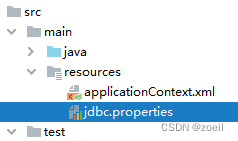
jdbc.user=root
jdbc.password=atguigu
jdbc.url=jdbc:mysql://localhost:3306/ssm?serverTimezone=UTC
jdbc.driver=com.mysql.cj.jdbc.Driver
③引入属性文件
引入context 名称空间
<?xml version="1.0" encoding="UTF-8"?>
<beans xmlns="http://www.springframework.org/schema/beans"xmlns:xsi="http://www.w3.org/2001/XMLSchema-instance"xmlns:context="http://www.springframework.org/schema/context"xsi:schemaLocation="http://www.springframework.org/schema/beanshttp://www.springframework.org/schema/beans/spring-beans.xsdhttp://www.springframework.org/schema/contexthttp://www.springframework.org/schema/context/spring-context.xsd"></beans>
<!-- 引入外部属性文件 -->
<context:property-placeholder location="classpath:jdbc.properties"/>
注意:在使用 context:property-placeholder 元素加载外包配置文件功能前,首先需要在 XML 配置的一级标签 中添加 context 相关的约束。
④配置bean
<bean id="druidDataSource" class="com.alibaba.druid.pool.DruidDataSource"><property name="url" value="${jdbc.url}"/><property name="driverClassName" value="${jdbc.driver}"/><property name="username" value="${jdbc.user}"/><property name="password" value="${jdbc.password}"/>
</bean>
⑤测试
@Test
public void testDataSource() throws SQLException {ApplicationContext ac = new ClassPathXmlApplicationContext("spring-datasource.xml");DataSource dataSource = ac.getBean(DataSource.class);Connection connection = dataSource.getConnection();System.out.println(connection);
}
2.11、实验十:bean的作用域
①概念
在Spring中可以通过配置bean标签的scope属性来指定bean的作用域范围,各取值含义参加下表:
| 取值 | 含义 | 创建对象的时机 |
|---|---|---|
| singleton(默认) | 在IOC容器中,这个bean的对象始终为单实例 | IOC容器初始化时 |
| prototype | 这个bean在IOC容器中有多个实例 | 获取bean时 |
如果是在WebApplicationContext环境下还会有另外几个作用域(但不常用):
| 取值 | 含义 |
|---|---|
| request | 在一个请求范围内有效 |
| session | 在一个会话范围内有效 |
②创建类User
package com.atguigu.spring6.bean;
public class User {private Integer id;private String username;private String password;private Integer age;public User() {}public User(Integer id, String username, String password, Integer age) {this.id = id;this.username = username;this.password = password;this.age = age;}public Integer getId() {return id;}public void setId(Integer id) {this.id = id;}public String getUsername() {return username;}public void setUsername(String username) {this.username = username;}public String getPassword() {return password;}public void setPassword(String password) {this.password = password;}public Integer getAge() {return age;}public void setAge(Integer age) {this.age = age;}@Overridepublic String toString() {return "User{" +"id=" + id +", username='" + username + '\'' +", password='" + password + '\'' +", age=" + age +'}';}
}
③配置bean
<!-- scope属性:取值singleton(默认值),bean在IOC容器中只有一个实例,IOC容器初始化时创建对象 -->
<!-- scope属性:取值prototype,bean在IOC容器中可以有多个实例,getBean()时创建对象 -->
<bean class="com.atguigu.spring6.bean.User" scope="prototype"></bean>
④测试
@Test
public void testBeanScope(){ApplicationContext ac = new ClassPathXmlApplicationContext("spring-scope.xml");User user1 = ac.getBean(User.class);User user2 = ac.getBean(User.class);System.out.println(user1==user2);
}
2.12、实验十一:bean生命周期
①具体的生命周期过程
-
bean对象创建(调用无参构造器)
-
给bean对象设置属性
-
bean的后置处理器(初始化之前)
-
bean对象初始化(需在配置bean时指定初始化方法)
-
bean的后置处理器(初始化之后)
-
bean对象就绪可以使用
-
bean对象销毁(需在配置bean时指定销毁方法)
-
IOC容器关闭
②修改类User
public class User {private Integer id;private String username;private String password;private Integer age;public User() {System.out.println("生命周期:1、创建对象");}public User(Integer id, String username, String password, Integer age) {this.id = id;this.username = username;this.password = password;this.age = age;}public Integer getId() {return id;}public void setId(Integer id) {System.out.println("生命周期:2、依赖注入");this.id = id;}public String getUsername() {return username;}public void setUsername(String username) {this.username = username;}public String getPassword() {return password;}public void setPassword(String password) {this.password = password;}public Integer getAge() {return age;}public void setAge(Integer age) {this.age = age;}public void initMethod(){System.out.println("生命周期:3、初始化");}public void destroyMethod(){System.out.println("生命周期:5、销毁");}@Overridepublic String toString() {return "User{" +"id=" + id +", username='" + username + '\'' +", password='" + password + '\'' +", age=" + age +'}';}
}
注意其中的initMethod()和destroyMethod(),可以通过配置bean指定为初始化和销毁的方法
③配置bean
<!-- 使用init-method属性指定初始化方法 -->
<!-- 使用destroy-method属性指定销毁方法 -->
<bean class="com.atguigu.spring6.bean.User" scope="prototype" init-method="initMethod" destroy-method="destroyMethod"><property name="id" value="1001"></property><property name="username" value="admin"></property><property name="password" value="123456"></property><property name="age" value="23"></property>
</bean>
④测试
@Test
public void testLife(){ClassPathXmlApplicationContext ac = new ClassPathXmlApplicationContext("spring-lifecycle.xml");User bean = ac.getBean(User.class);System.out.println("生命周期:4、通过IOC容器获取bean并使用");ac.close();
}
⑤bean的后置处理器
bean的后置处理器会在生命周期的初始化前后添加额外的操作,需要实现BeanPostProcessor接口,且配置到IOC容器中,需要注意的是,bean后置处理器不是单独针对某一个bean生效,而是针对IOC容器中所有bean都会执行
创建bean的后置处理器:
package com.atguigu.spring6.process;import org.springframework.beans.BeansException;
import org.springframework.beans.factory.config.BeanPostProcessor;public class MyBeanProcessor implements BeanPostProcessor {@Overridepublic Object postProcessBeforeInitialization(Object bean, String beanName) throws BeansException {System.out.println("☆☆☆" + beanName + " = " + bean);return bean;}@Overridepublic Object postProcessAfterInitialization(Object bean, String beanName) throws BeansException {System.out.println("★★★" + beanName + " = " + bean);return bean;}
}
在IOC容器中配置后置处理器:
<!-- bean的后置处理器要放入IOC容器才能生效 -->
<bean id="myBeanProcessor" class="com.atguigu.spring6.process.MyBeanProcessor"/>
2.13、实验十二:FactoryBean
①简介
FactoryBean是Spring提供的一种整合第三方框架的常用机制。和普通的bean不同,配置一个FactoryBean类型的bean,在获取bean的时候得到的并不是class属性中配置的这个类的对象,而是getObject()方法的返回值。通过这种机制,Spring可以帮我们把复杂组件创建的详细过程和繁琐细节都屏蔽起来,只把最简洁的使用界面展示给我们。
将来我们整合Mybatis时,Spring就是通过FactoryBean机制来帮我们创建SqlSessionFactory对象的。
/** Copyright 2002-2020 the original author or authors.** Licensed under the Apache License, Version 2.0 (the "License");* you may not use this file except in compliance with the License.* You may obtain a copy of the License at** https://www.apache.org/licenses/LICENSE-2.0** Unless required by applicable law or agreed to in writing, software* distributed under the License is distributed on an "AS IS" BASIS,* WITHOUT WARRANTIES OR CONDITIONS OF ANY KIND, either express or implied.* See the License for the specific language governing permissions and* limitations under the License.*/
package org.springframework.beans.factory;import org.springframework.lang.Nullable;/*** Interface to be implemented by objects used within a {@link BeanFactory} which* are themselves factories for individual objects. If a bean implements this* interface, it is used as a factory for an object to expose, not directly as a* bean instance that will be exposed itself.** <p><b>NB: A bean that implements this interface cannot be used as a normal bean.</b>* A FactoryBean is defined in a bean style, but the object exposed for bean* references ({@link #getObject()}) is always the object that it creates.** <p>FactoryBeans can support singletons and prototypes, and can either create* objects lazily on demand or eagerly on startup. The {@link SmartFactoryBean}* interface allows for exposing more fine-grained behavioral metadata.** <p>This interface is heavily used within the framework itself, for example for* the AOP {@link org.springframework.aop.framework.ProxyFactoryBean} or the* {@link org.springframework.jndi.JndiObjectFactoryBean}. It can be used for* custom components as well; however, this is only common for infrastructure code.** <p><b>{@code FactoryBean} is a programmatic contract. Implementations are not* supposed to rely on annotation-driven injection or other reflective facilities.</b>* {@link #getObjectType()} {@link #getObject()} invocations may arrive early in the* bootstrap process, even ahead of any post-processor setup. If you need access to* other beans, implement {@link BeanFactoryAware} and obtain them programmatically.** <p><b>The container is only responsible for managing the lifecycle of the FactoryBean* instance, not the lifecycle of the objects created by the FactoryBean.</b> Therefore,* a destroy method on an exposed bean object (such as {@link java.io.Closeable#close()}* will <i>not</i> be called automatically. Instead, a FactoryBean should implement* {@link DisposableBean} and delegate any such close call to the underlying object.** <p>Finally, FactoryBean objects participate in the containing BeanFactory's* synchronization of bean creation. There is usually no need for internal* synchronization other than for purposes of lazy initialization within the* FactoryBean itself (or the like).** @author Rod Johnson* @author Juergen Hoeller* @since 08.03.2003* @param <T> the bean type* @see org.springframework.beans.factory.BeanFactory* @see org.springframework.aop.framework.ProxyFactoryBean* @see org.springframework.jndi.JndiObjectFactoryBean*/
public interface FactoryBean<T> {/*** The name of an attribute that can be* {@link org.springframework.core.AttributeAccessor#setAttribute set} on a* {@link org.springframework.beans.factory.config.BeanDefinition} so that* factory beans can signal their object type when it can't be deduced from* the factory bean class.* @since 5.2*/String OBJECT_TYPE_ATTRIBUTE = "factoryBeanObjectType";/*** Return an instance (possibly shared or independent) of the object* managed by this factory.* <p>As with a {@link BeanFactory}, this allows support for both the* Singleton and Prototype design pattern.* <p>If this FactoryBean is not fully initialized yet at the time of* the call (for example because it is involved in a circular reference),* throw a corresponding {@link FactoryBeanNotInitializedException}.* <p>As of Spring 2.0, FactoryBeans are allowed to return {@code null}* objects. The factory will consider this as normal value to be used; it* will not throw a FactoryBeanNotInitializedException in this case anymore.* FactoryBean implementations are encouraged to throw* FactoryBeanNotInitializedException themselves now, as appropriate.* @return an instance of the bean (can be {@code null})* @throws Exception in case of creation errors* @see FactoryBeanNotInitializedException*/@NullableT getObject() throws Exception;/*** Return the type of object that this FactoryBean creates,* or {@code null} if not known in advance.* <p>This allows one to check for specific types of beans without* instantiating objects, for example on autowiring.* <p>In the case of implementations that are creating a singleton object,* this method should try to avoid singleton creation as far as possible;* it should rather estimate the type in advance.* For prototypes, returning a meaningful type here is advisable too.* <p>This method can be called <i>before</i> this FactoryBean has* been fully initialized. It must not rely on state created during* initialization; of course, it can still use such state if available.* <p><b>NOTE:</b> Autowiring will simply ignore FactoryBeans that return* {@code null} here. Therefore it is highly recommended to implement* this method properly, using the current state of the FactoryBean.* @return the type of object that this FactoryBean creates,* or {@code null} if not known at the time of the call* @see ListableBeanFactory#getBeansOfType*/@NullableClass<?> getObjectType();/*** Is the object managed by this factory a singleton? That is,* will {@link #getObject()} always return the same object* (a reference that can be cached)?* <p><b>NOTE:</b> If a FactoryBean indicates to hold a singleton object,* the object returned from {@code getObject()} might get cached* by the owning BeanFactory. Hence, do not return {@code true}* unless the FactoryBean always exposes the same reference.* <p>The singleton status of the FactoryBean itself will generally* be provided by the owning BeanFactory; usually, it has to be* defined as singleton there.* <p><b>NOTE:</b> This method returning {@code false} does not* necessarily indicate that returned objects are independent instances.* An implementation of the extended {@link SmartFactoryBean} interface* may explicitly indicate independent instances through its* {@link SmartFactoryBean#isPrototype()} method. Plain {@link FactoryBean}* implementations which do not implement this extended interface are* simply assumed to always return independent instances if the* {@code isSingleton()} implementation returns {@code false}.* <p>The default implementation returns {@code true}, since a* {@code FactoryBean} typically manages a singleton instance.* @return whether the exposed object is a singleton* @see #getObject()* @see SmartFactoryBean#isPrototype()*/default boolean isSingleton() {return true;}
}
②创建类UserFactoryBean
package com.atguigu.spring6.bean;
public class UserFactoryBean implements FactoryBean<User> {@Overridepublic User getObject() throws Exception {return new User();}@Overridepublic Class<?> getObjectType() {return User.class;}
}
③配置bean
<bean id="user" class="com.atguigu.spring6.bean.UserFactoryBean"></bean>
④测试
@Test
public void testUserFactoryBean(){//获取IOC容器ApplicationContext ac = new ClassPathXmlApplicationContext("spring-factorybean.xml");User user = (User) ac.getBean("user");System.out.println(user);
}
2.14、实验十三:基于xml自动装配
自动装配:
根据指定的策略,在IOC容器中匹配某一个bean,自动为指定的bean中所依赖的类类型或接口类型属性赋值
①场景模拟
创建类UserController
package com.atguigu.spring6.autowire.controller
public class UserController {private UserService userService;public void setUserService(UserService userService) {this.userService = userService;}public void saveUser(){userService.saveUser();}}
创建接口UserService
package com.atguigu.spring6.autowire.service
public interface UserService {void saveUser();}
创建类UserServiceImpl实现接口UserService
package com.atguigu.spring6.autowire.service.impl
public class UserServiceImpl implements UserService {private UserDao userDao;public void setUserDao(UserDao userDao) {this.userDao = userDao;}@Overridepublic void saveUser() {userDao.saveUser();}}
创建接口UserDao
package com.atguigu.spring6.autowire.dao
public interface UserDao {void saveUser();}
创建类UserDaoImpl实现接口UserDao
package com.atguigu.spring6.autowire.dao.impl
public class UserDaoImpl implements UserDao {@Overridepublic void saveUser() {System.out.println("保存成功");}}
②配置bean
使用bean标签的autowire属性设置自动装配效果
自动装配方式:byType
byType:根据类型匹配IOC容器中的某个兼容类型的bean,为属性自动赋值
若在IOC中,没有任何一个兼容类型的bean能够为属性赋值,则该属性不装配,即值为默认值null
若在IOC中,有多个兼容类型的bean能够为属性赋值,则抛出异常NoUniqueBeanDefinitionException
<bean id="userController" class="com.atguigu.spring6.autowire.controller.UserController" autowire="byType"></bean><bean id="userService" class="com.atguigu.spring6.autowire.service.impl.UserServiceImpl" autowire="byType"></bean><bean id="userDao" class="com.atguigu.spring6.autowire.dao.impl.UserDaoImpl"></bean>
自动装配方式:byName
byName:将自动装配的属性的属性名,作为bean的id在IOC容器中匹配相对应的bean进行赋值
<bean id="userController" class="com.atguigu.spring6.autowire.controller.UserController" autowire="byName"></bean><bean id="userService" class="com.atguigu.spring6.autowire.service.impl.UserServiceImpl" autowire="byName"></bean>
<bean id="userServiceImpl" class="com.atguigu.spring6.autowire.service.impl.UserServiceImpl" autowire="byName"></bean><bean id="userDao" class="com.atguigu.spring6.autowire.dao.impl.UserDaoImpl"></bean>
<bean id="userDaoImpl" class="com.atguigu.spring6.autowire.dao.impl.UserDaoImpl"></bean>
③测试
@Test
public void testAutoWireByXML(){ApplicationContext ac = new ClassPathXmlApplicationContext("autowire-xml.xml");UserController userController = ac.getBean(UserController.class);userController.saveUser();
}
3、基于注解管理Bean(☆)
从 Java 5 开始,Java 增加了对注解(Annotation)的支持,它是代码中的一种特殊标记,可以在编译、类加载和运行时被读取,执行相应的处理。开发人员可以通过注解在不改变原有代码和逻辑的情况下,在源代码中嵌入补充信息。
Spring 从 2.5 版本开始提供了对注解技术的全面支持,我们可以使用注解来实现自动装配,简化 Spring 的 XML 配置。
Spring 通过注解实现自动装配的步骤如下:
- 引入依赖
- 开启组件扫描
- 使用注解定义 Bean
- 依赖注入
3.1、搭建子模块spring6-ioc-annotation
①搭建模块
搭建方式如:spring6-ioc-xml
②引入配置文件
引入spring-ioc-xml模块日志log4j2.xml
③添加依赖
<dependencies><!--spring context依赖--><!--当你引入Spring Context依赖之后,表示将Spring的基础依赖引入了--><dependency><groupId>org.springframework</groupId><artifactId>spring-context</artifactId><version>6.0.3</version></dependency><!--junit5测试--><dependency><groupId>org.junit.jupiter</groupId><artifactId>junit-jupiter-api</artifactId></dependency><!--log4j2的依赖--><dependency><groupId>org.apache.logging.log4j</groupId><artifactId>log4j-core</artifactId><version>2.19.0</version></dependency><dependency><groupId>org.apache.logging.log4j</groupId><artifactId>log4j-slf4j2-impl</artifactId><version>2.19.0</version></dependency>
</dependencies>
3.2、开启组件扫描
Spring 默认不使用注解装配 Bean,因此我们需要在 Spring 的 XML 配置中,通过 context:component-scan 元素开启 Spring Beans的自动扫描功能。开启此功能后,Spring 会自动从扫描指定的包(base-package 属性设置)及其子包下的所有类,如果类上使用了 @Component 注解,就将该类装配到容器中。
<?xml version="1.0" encoding="UTF-8"?>
<beans xmlns="http://www.springframework.org/schema/beans"xmlns:xsi="http://www.w3.org/2001/XMLSchema-instance"xmlns:context="http://www.springframework.org/schema/context"xsi:schemaLocation="http://www.springframework.org/schema/beanshttp://www.springframework.org/schema/beans/spring-beans-3.0.xsdhttp://www.springframework.org/schema/contexthttp://www.springframework.org/schema/context/spring-context.xsd"><!--开启组件扫描功能--><context:component-scan base-package="com.atguigu.spring6"></context:component-scan>
</beans>
注意:在使用 context:component-scan 元素开启自动扫描功能前,首先需要在 XML 配置的一级标签 中添加 context 相关的约束。
情况一:最基本的扫描方式
<context:component-scan base-package="com.atguigu.spring6">
</context:component-scan>
情况二:指定要排除的组件
<context:component-scan base-package="com.atguigu.spring6"><!-- context:exclude-filter标签:指定排除规则 --><!-- type:设置排除或包含的依据type="annotation",根据注解排除,expression中设置要排除的注解的全类名type="assignable",根据类型排除,expression中设置要排除的类型的全类名--><context:exclude-filter type="annotation" expression="org.springframework.stereotype.Controller"/><!--<context:exclude-filter type="assignable" expression="com.atguigu.spring6.controller.UserController"/>-->
</context:component-scan>
情况三:仅扫描指定组件
<context:component-scan base-package="com.atguigu" use-default-filters="false"><!-- context:include-filter标签:指定在原有扫描规则的基础上追加的规则 --><!-- use-default-filters属性:取值false表示关闭默认扫描规则 --><!-- 此时必须设置use-default-filters="false",因为默认规则即扫描指定包下所有类 --><!-- type:设置排除或包含的依据type="annotation",根据注解排除,expression中设置要排除的注解的全类名type="assignable",根据类型排除,expression中设置要排除的类型的全类名--><context:include-filter type="annotation" expression="org.springframework.stereotype.Controller"/><!--<context:include-filter type="assignable" expression="com.atguigu.spring6.controller.UserController"/>-->
</context:component-scan>
3.3、使用注解定义 Bean
Spring 提供了以下多个注解,这些注解可以直接标注在 Java 类上,将它们定义成 Spring Bean。
| 注解 | 说明 |
|---|---|
| @Component | 该注解用于描述 Spring 中的 Bean,它是一个泛化的概念,仅仅表示容器中的一个组件(Bean),并且可以作用在应用的任何层次,例如 Service 层、Dao 层等。 使用时只需将该注解标注在相应类上即可。 |
| @Repository | 该注解用于将数据访问层(Dao 层)的类标识为 Spring 中的 Bean,其功能与 @Component 相同。 |
| @Service | 该注解通常作用在业务层(Service 层),用于将业务层的类标识为 Spring 中的 Bean,其功能与 @Component 相同。 |
| @Controller | 该注解通常作用在控制层(如SpringMVC 的 Controller),用于将控制层的类标识为 Spring 中的 Bean,其功能与 @Component 相同。 |
3.4、实验一:@Autowired注入
单独使用@Autowired注解,默认根据类型装配。【默认是byType】
查看源码:
package org.springframework.beans.factory.annotation;import java.lang.annotation.Documented;
import java.lang.annotation.ElementType;
import java.lang.annotation.Retention;
import java.lang.annotation.RetentionPolicy;
import java.lang.annotation.Target;@Target({ElementType.CONSTRUCTOR, ElementType.METHOD, ElementType.PARAMETER, ElementType.FIELD, ElementType.ANNOTATION_TYPE})
@Retention(RetentionPolicy.RUNTIME)
@Documented
public @interface Autowired {boolean required() default true;
}
源码中有两处需要注意:
-
第一处:该注解可以标注在哪里?
-
- 构造方法上
- 方法上
- 形参上
- 属性上
- 注解上
-
第二处:该注解有一个required属性,默认值是true,表示在注入的时候要求被注入的Bean必须是存在的,如果不存在则报错。如果required属性设置为false,表示注入的Bean存在或者不存在都没关系,存在的话就注入,不存在的话,也不报错。
①场景一:属性注入
创建UserDao接口
package com.atguigu.spring6.dao;public interface UserDao {public void print();
}
创建UserDaoImpl实现
package com.atguigu.spring6.dao.impl;import com.atguigu.spring6.dao.UserDao;
import org.springframework.stereotype.Repository;@Repository
public class UserDaoImpl implements UserDao {@Overridepublic void print() {System.out.println("Dao层执行结束");}
}
创建UserService接口
package com.atguigu.spring6.service;public interface UserService {public void out();
}
创建UserServiceImpl实现类
package com.atguigu.spring6.service.impl;import com.atguigu.spring6.dao.UserDao;
import com.atguigu.spring6.service.UserService;
import org.springframework.beans.factory.annotation.Autowired;
import org.springframework.stereotype.Service;@Service
public class UserServiceImpl implements UserService {@Autowiredprivate UserDao userDao;@Overridepublic void out() {userDao.print();System.out.println("Service层执行结束");}
}
创建UserController类
package com.atguigu.spring6.controller;import com.atguigu.spring6.service.UserService;
import org.springframework.beans.factory.annotation.Autowired;
import org.springframework.stereotype.Controller;@Controller
public class UserController {@Autowiredprivate UserService userService;public void out() {userService.out();System.out.println("Controller层执行结束。");}}
测试一
package com.atguigu.spring6.bean;import com.atguigu.spring6.controller.UserController;
import org.junit.jupiter.api.Test;
import org.slf4j.Logger;
import org.slf4j.LoggerFactory;
import org.springframework.context.ApplicationContext;
import org.springframework.context.support.ClassPathXmlApplicationContext;public class UserTest {private Logger logger = LoggerFactory.getLogger(UserTest.class);@Testpublic void testAnnotation(){ApplicationContext context = new ClassPathXmlApplicationContext("Beans.xml");UserController userController = context.getBean("userController", UserController.class);userController.out();logger.info("执行成功");}}
测试结果:

以上构造方法和setter方法都没有提供,经过测试,仍然可以注入成功。
②场景二:set注入
修改UserServiceImpl类
package com.atguigu.spring6.service.impl;import com.atguigu.spring6.dao.UserDao;
import com.atguigu.spring6.service.UserService;
import org.springframework.beans.factory.annotation.Autowired;
import org.springframework.stereotype.Service;@Service
public class UserServiceImpl implements UserService {private UserDao userDao;@Autowiredpublic void setUserDao(UserDao userDao) {this.userDao = userDao;}@Overridepublic void out() {userDao.print();System.out.println("Service层执行结束");}
}
修改UserController类
package com.atguigu.spring6.controller;import com.atguigu.spring6.service.UserService;
import org.springframework.beans.factory.annotation.Autowired;
import org.springframework.stereotype.Controller;@Controller
public class UserController {private UserService userService;@Autowiredpublic void setUserService(UserService userService) {this.userService = userService;}public void out() {userService.out();System.out.println("Controller层执行结束。");}}
测试:成功调用
③场景三:构造方法注入
修改UserServiceImpl类
package com.atguigu.spring6.service.impl;import com.atguigu.spring6.dao.UserDao;
import com.atguigu.spring6.service.UserService;
import org.springframework.beans.factory.annotation.Autowired;
import org.springframework.stereotype.Service;@Service
public class UserServiceImpl implements UserService {private UserDao userDao;@Autowiredpublic UserServiceImpl(UserDao userDao) {this.userDao = userDao;}@Overridepublic void out() {userDao.print();System.out.println("Service层执行结束");}
}
修改UserController类
package com.atguigu.spring6.controller;import com.atguigu.spring6.service.UserService;
import org.springframework.beans.factory.annotation.Autowired;
import org.springframework.stereotype.Controller;@Controller
public class UserController {private UserService userService;@Autowiredpublic UserController(UserService userService) {this.userService = userService;}public void out() {userService.out();System.out.println("Controller层执行结束。");}}
测试:成功调用
④场景四:形参上注入
修改UserServiceImpl类
package com.atguigu.spring6.service.impl;import com.atguigu.spring6.dao.UserDao;
import com.atguigu.spring6.service.UserService;
import org.springframework.beans.factory.annotation.Autowired;
import org.springframework.stereotype.Service;@Service
public class UserServiceImpl implements UserService {private UserDao userDao;public UserServiceImpl(@Autowired UserDao userDao) {this.userDao = userDao;}@Overridepublic void out() {userDao.print();System.out.println("Service层执行结束");}
}
修改UserController类
package com.atguigu.spring6.controller;import com.atguigu.spring6.service.UserService;
import org.springframework.beans.factory.annotation.Autowired;
import org.springframework.stereotype.Controller;@Controller
public class UserController {private UserService userService;public UserController(@Autowired UserService userService) {this.userService = userService;}public void out() {userService.out();System.out.println("Controller层执行结束。");}}
测试:成功调用
⑤场景五:只有一个构造函数,无注解
修改UserServiceImpl类
package com.atguigu.spring6.service.impl;import com.atguigu.spring6.dao.UserDao;
import com.atguigu.spring6.service.UserService;
import org.springframework.beans.factory.annotation.Autowired;
import org.springframework.beans.factory.annotation.Qualifier;
import org.springframework.stereotype.Service;@Service
public class UserServiceImpl implements UserService {@Autowiredprivate UserDao userDao;public UserServiceImpl(UserDao userDao) {this.userDao = userDao;}@Overridepublic void out() {userDao.print();System.out.println("Service层执行结束");}
}
测试通过
当有参数的构造方法只有一个时,@Autowired注解可以省略。
说明:有多个构造方法时呢?大家可以测试(再添加一个无参构造函数),测试报错
⑥场景六:@Autowired注解和@Qualifier注解联合
添加dao层实现
package com.atguigu.spring6.dao.impl;import com.atguigu.spring6.dao.UserDao;
import org.springframework.stereotype.Repository;@Repository
public class UserDaoRedisImpl implements UserDao {@Overridepublic void print() {System.out.println("Redis Dao层执行结束");}
}
测试:测试异常
错误信息中说:不能装配,UserDao这个Bean的数量等于2
怎么解决这个问题呢?当然要byName,根据名称进行装配了。
修改UserServiceImpl类
package com.atguigu.spring6.service.impl;import com.atguigu.spring6.dao.UserDao;
import com.atguigu.spring6.service.UserService;
import org.springframework.beans.factory.annotation.Autowired;
import org.springframework.stereotype.Service;@Service
public class UserServiceImpl implements UserService {@Autowired@Qualifier("userDaoImpl") // 指定bean的名字private UserDao userDao;@Overridepublic void out() {userDao.print();System.out.println("Service层执行结束");}
}
总结
- @Autowired注解可以出现在:属性上、构造方法上、构造方法的参数上、setter方法上。
- 当带参数的构造方法只有一个,@Autowired注解可以省略。()
- @Autowired注解默认根据类型注入。如果要根据名称注入的话,需要配合@Qualifier注解一起使用。
3.5、实验二:@Resource注入
@Resource注解也可以完成属性注入。那它和@Autowired注解有什么区别?
- @Resource注解是JDK扩展包中的,也就是说属于JDK的一部分。所以该注解是标准注解,更加具有通用性。(JSR-250标准中制定的注解类型。JSR是Java规范提案。)
- @Autowired注解是Spring框架自己的。
- @Resource注解默认根据名称装配byName,未指定name时,使用属性名作为name。通过name找不到的话会自动启动通过类型byType装配。
- @Autowired注解默认根据类型装配byType,如果想根据名称装配,需要配合@Qualifier注解一起用。
- @Resource注解用在属性上、setter方法上。
- @Autowired注解用在属性上、setter方法上、构造方法上、构造方法参数上。
@Resource注解属于JDK扩展包,所以不在JDK当中,需要额外引入以下依赖:【如果是JDK8的话不需要额外引入依赖。高于JDK11或低于JDK8需要引入以下依赖。】
<dependency><groupId>jakarta.annotation</groupId><artifactId>jakarta.annotation-api</artifactId><version>2.1.1</version>
</dependency>
源码:
package jakarta.annotation;import java.lang.annotation.ElementType;
import java.lang.annotation.Repeatable;
import java.lang.annotation.Retention;
import java.lang.annotation.RetentionPolicy;
import java.lang.annotation.Target;@Target({ElementType.TYPE, ElementType.FIELD, ElementType.METHOD})
@Retention(RetentionPolicy.RUNTIME)
@Repeatable(Resources.class)
public @interface Resource {String name() default "";String lookup() default "";Class<?> type() default Object.class;Resource.AuthenticationType authenticationType() default Resource.AuthenticationType.CONTAINER;boolean shareable() default true;String mappedName() default "";String description() default "";public static enum AuthenticationType {CONTAINER,APPLICATION;private AuthenticationType() {}}
}
①场景一:根据name注入
修改UserDaoImpl类
package com.atguigu.spring6.dao.impl;import com.atguigu.spring6.dao.UserDao;
import org.springframework.stereotype.Repository;@Repository("myUserDao")
public class UserDaoImpl implements UserDao {@Overridepublic void print() {System.out.println("Dao层执行结束");}
}
修改UserServiceImpl类
package com.atguigu.spring6.service.impl;import com.atguigu.spring6.dao.UserDao;
import com.atguigu.spring6.service.UserService;
import jakarta.annotation.Resource;
import org.springframework.beans.factory.annotation.Autowired;
import org.springframework.beans.factory.annotation.Qualifier;
import org.springframework.stereotype.Service;@Service
public class UserServiceImpl implements UserService {@Resource(name = "myUserDao")private UserDao myUserDao;@Overridepublic void out() {myUserDao.print();System.out.println("Service层执行结束");}
}
测试通过
②场景二:name未知注入
修改UserDaoImpl类
package com.atguigu.spring6.dao.impl;import com.atguigu.spring6.dao.UserDao;
import org.springframework.stereotype.Repository;@Repository("myUserDao")
public class UserDaoImpl implements UserDao {@Overridepublic void print() {System.out.println("Dao层执行结束");}
}
修改UserServiceImpl类
package com.atguigu.spring6.service.impl;import com.atguigu.spring6.dao.UserDao;
import com.atguigu.spring6.service.UserService;
import jakarta.annotation.Resource;
import org.springframework.beans.factory.annotation.Autowired;
import org.springframework.beans.factory.annotation.Qualifier;
import org.springframework.stereotype.Service;@Service
public class UserServiceImpl implements UserService {@Resourceprivate UserDao myUserDao;@Overridepublic void out() {myUserDao.print();System.out.println("Service层执行结束");}
}
测试通过
当@Resource注解使用时没有指定name的时候,还是根据name进行查找,这个name是属性名。
③场景三 其他情况
修改UserServiceImpl类,userDao1属性名不存在
package com.atguigu.spring6.service.impl;import com.atguigu.spring6.dao.UserDao;
import com.atguigu.spring6.service.UserService;
import jakarta.annotation.Resource;
import org.springframework.beans.factory.annotation.Autowired;
import org.springframework.beans.factory.annotation.Qualifier;
import org.springframework.stereotype.Service;@Service
public class UserServiceImpl implements UserService {@Resourceprivate UserDao userDao1;@Overridepublic void out() {userDao1.print();System.out.println("Service层执行结束");}
}
测试异常
根据异常信息得知:显然当通过name找不到的时候,自然会启动byType进行注入,以上的错误是因为UserDao接口下有两个实现类导致的。所以根据类型注入就会报错。
@Resource的set注入可以自行测试
总结:
@Resource注解:默认byName注入,没有指定name时把属性名当做name,根据name找不到时,才会byType注入。byType注入时,某种类型的Bean只能有一个
3.6、Spring全注解开发
全注解开发就是不再使用spring配置文件了,写一个配置类来代替配置文件。
package com.atguigu.spring6.config;import org.springframework.context.annotation.ComponentScan;
import org.springframework.context.annotation.Configuration;@Configuration
//@ComponentScan({"com.atguigu.spring6.controller", "com.atguigu.spring6.service","com.atguigu.spring6.dao"})
@ComponentScan("com.atguigu.spring6")
public class Spring6Config {
}
测试类
@Test
public void testAllAnnotation(){ApplicationContext context = new AnnotationConfigApplicationContext(Spring6Config.class);UserController userController = context.getBean("userController", UserController.class);userController.out();logger.info("执行成功");
}
相关文章:

spring6-IOC容器
IOC容器 1、IoC容器1.1、控制反转(IoC)1.2、依赖注入1.3、IoC容器在Spring的实现 2、基于XML管理Bean2.1、搭建子模块spring6-ioc-xml2.2、实验一:获取bean①方式一:根据id获取②方式二:根据类型获取③方式三ÿ…...

macOS - 使用 chromedriver
文章目录 下载对应的 chromedriver 下载 Chrome https://www.google.com/chrome/ 查看 版本 下载对应的 chromedriver http://chromedriver.storage.googleapis.com/index.html https://chromedriver.chromium.org/downloads 移动 sudo mv chromedriver /usr/local/bin/ $ c…...

项目进展(四)-双电机均可驱动,配置模拟SPI,调平仪功能初步实现!
一、前言 截止到今天,该项目也算实现基本功能了,后续继续更新有关32位ADC芯片相关的内容,今天对驱动芯片做一个总结,也对模拟SPI做一点总结吧 二、模拟SPI 由于模拟SPI还是得有四种模式(CPOL和CPHA组合为四种),下面…...
)
《学术小白学习之路13》基于DTM和主题共现网络——实现主题时序演化网络分析(数据代码在结尾)
《学术小白学习之路13》基于DTM和主题共现网络实现主题演化网络分析 一、数据导入二、数据预处理2.1分词2.2 向量化三、DTM建模3.1 主题一致性检验3.2主题建模四、计算主题的相似度4.1获取文档主题分布4.2 时期分组4.3相似度计算4.3.1第一时期和第二时期的对比4.3.2第二时期与第…...

实验三十三、三端稳压器 LM7805 稳压性能的研究
一、题目 LM7805 输出电压、电压调整率、电流调整率以及输出纹波电压的研究。 二、仿真电路 电路如图1所示。集成稳压芯片采用 LM7805CT。 三、仿真内容 (1)测量图1(a)LM7805CT 的电压调整率,测量条件为 I O 50…...

第三章 软件架构
固件框架由如下所示的构建块组成,如上图所示。 隔离边界。分区接口。分区。分区清单。分区管理器。以下各小节详细描述了这些构建块。 3.1 隔离边界 该框架定义了两种类型的隔离边界。 1、逻辑隔离边界,可用于以下情况: (1)通过一个由 IMPLEMENTATION DEFINED 机制定义…...

怎么保护苹果手机移动应用程序ipa中文件安全?
目录 前言 1. 对敏感文件进行文件名称混淆 2. 更改文件的MD5值 3. 增加不可见水印处理 3. 对html,js,css等资源进行压缩 5. 删除可执行文件中的调试信息 前言 ios应用程序存储一些图片,资源,配置信息,甚至敏感数…...

中秋节快乐
中秋节快乐,国庆节快乐...
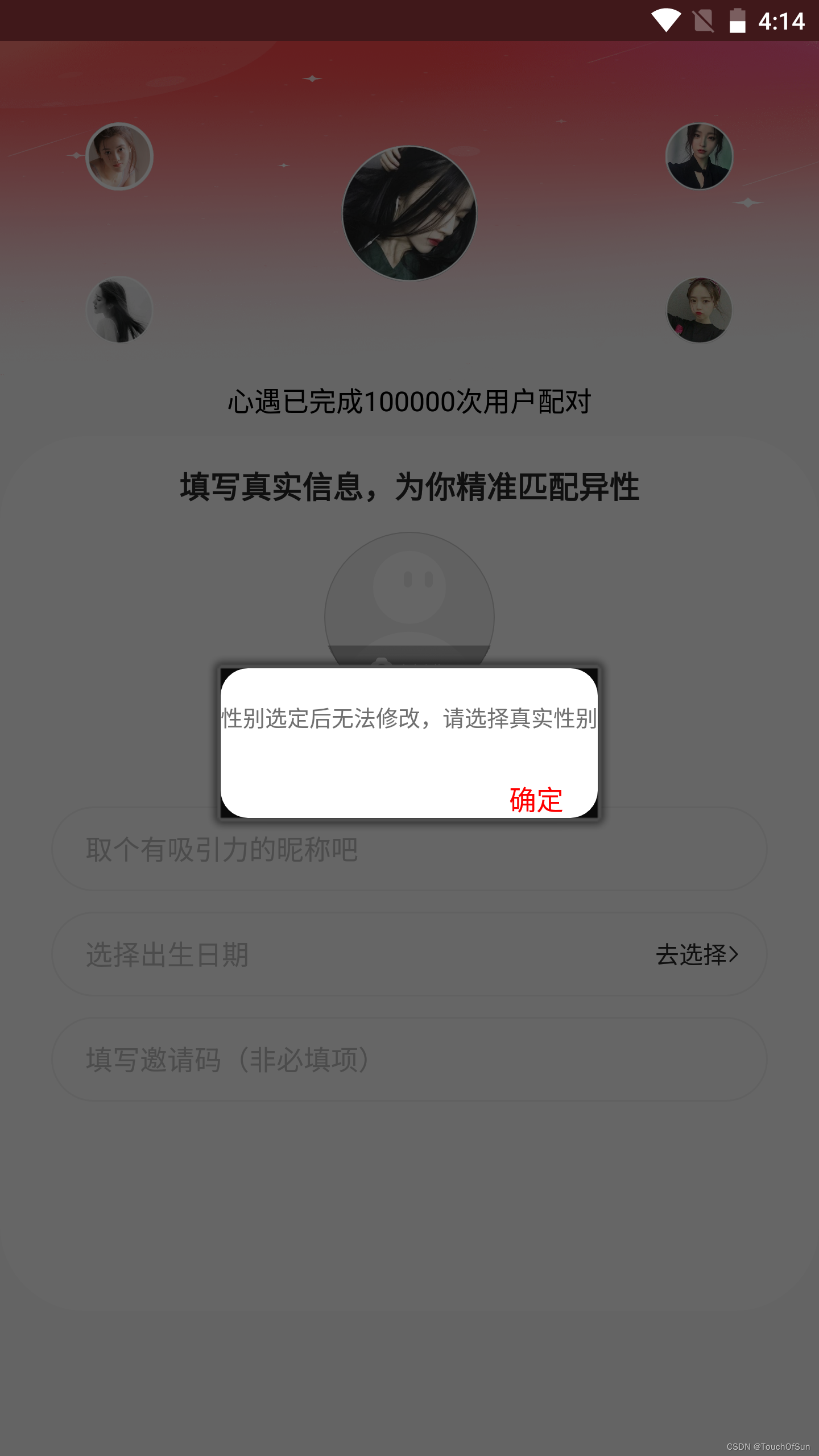
【记录文】Android自定义Dialog实现圆角对话框
圆角的dialog还是蛮常用的,demo中正好用上了 自定义Dialog,代码中可以设置指定大小与位置 /*** author : jiangxue* date : 2023/9/25 13:21* description :圆角的矩形*/internal class RoundCornerView(context: Context,view: Int, StyleRes theme…...

架构案例2022(四十二)
促销管理系统 某电子商务公司拟升级其会员与促销管理系统,向用户提供个性化服务,提高用户的粘性。在项目立项之初,公司领导层一致认为本次升级的主要目标是提升会员管理方式的灵活性,由于当前用户规模不大,业务也相对…...

kafka 集群搭建 常用命令
1、集群搭建: <1> 将kafka 压缩包解压到某一目录 tar -zxvf kafka_2.12-3.5.1.tgz <2> 修改节点配置文件 vim config/server.properties broker.id0 log.dirs/tmp/kafka-logs <3> 将安装好的kafka 分发到其他服务器 scp -r kafka_2.12-2.4…...
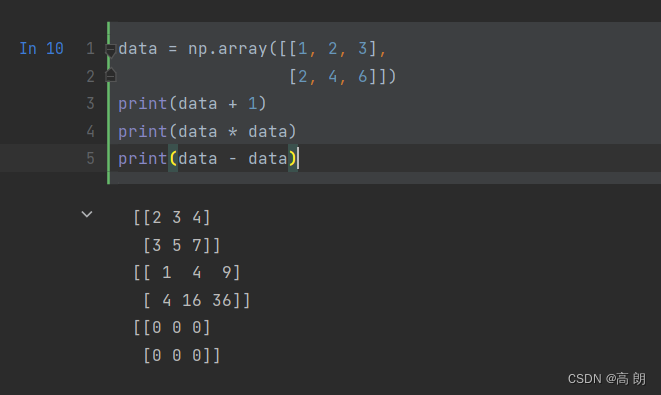
【python】numpy库
文章目录 简单介绍功能示例代码 简单介绍 NumPy(Numerical Python的简称)是Python数值计算最重要的基础包。大多数提供科学计算的包都是用NumPy的数组作为构建基础。 NumPy是在一个连续的内存块中存储数据,独立于其他Python内置对象。NumPy…...
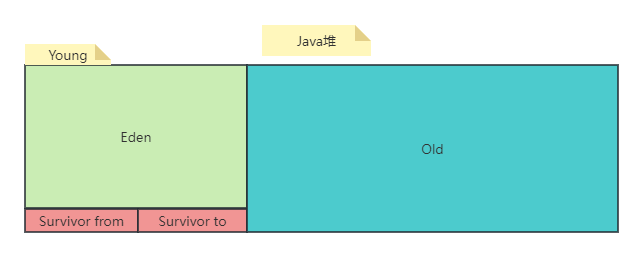
jvm垃圾收集算法
简介 由于《分代收集理论》和不同垃圾收集算法,Java堆应该被划分为不同区域,一般至少会把Java堆划分为新生代(Young Generation)和老年代(Old Generation)两个区域。 垃圾收集器可以只回收其中某一个或者…...
 白皮书)
Arm机密计算架构技术(Armv9 CCA) 白皮书
1. 概述 在本篇文章中,我们将介绍机密计算(Confidential Computing)在现代计算平台中扮演的角色,并解释机密计算的原理。然后我们将说明 Arm 机密计算架构 (Arm CCA) 如何在 Arm 计算平台中实现机密计算。 看完本文后,您将能够: 定义机密计算描述复杂的系统信任链了解R…...
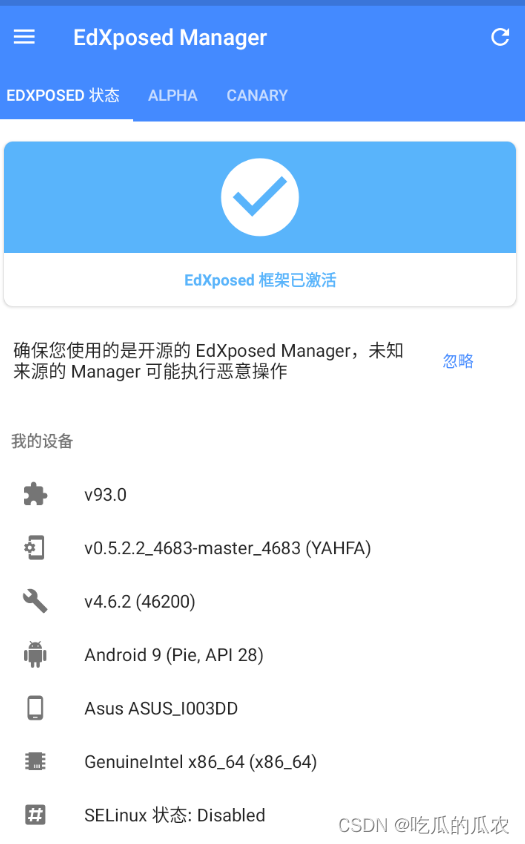
Magisk Delta以及EdXposed工具在逍遥模拟器上安装教程
材料准备: 1,逍遥模拟器 安卓9的镜像 2,EdXpose 的apk以及对应的zip文件 3,riru框架 zip文件 4,magisk delta 的apk文件以及magisk manager的apk文件 放心 这些我都打包放好了,还有已经打包好的逍遥模拟器镜…...
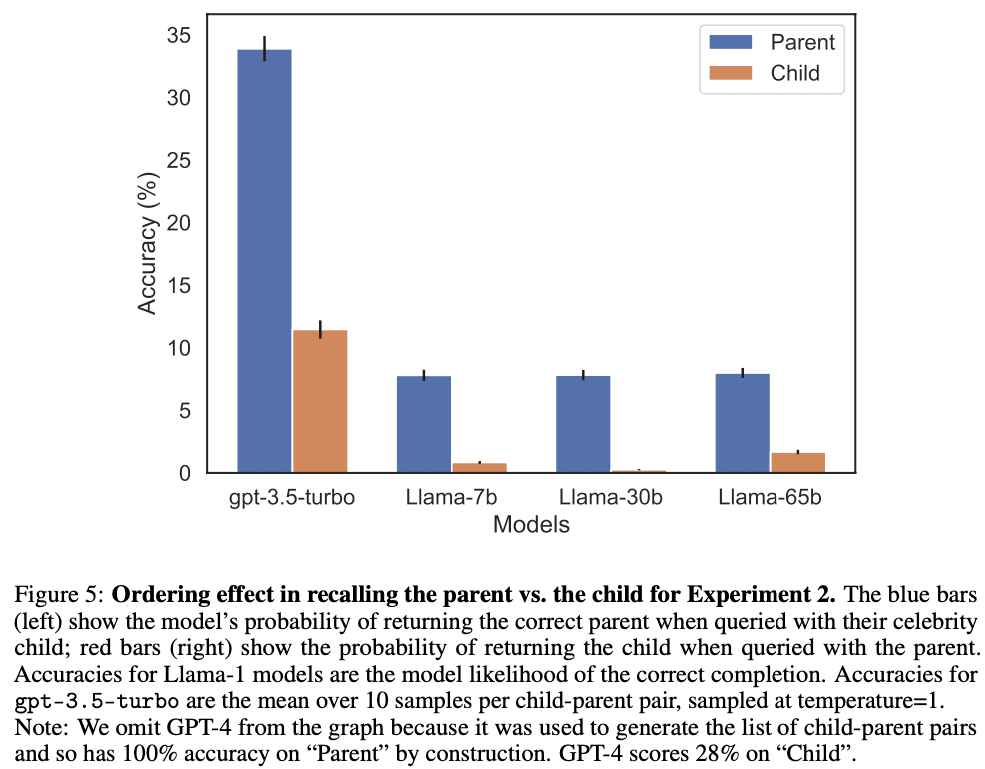
The Reversal Curse: LLMs trained on “A is B“ fail to learn “B is A“
(not an original, only classified as one to avoid cramming reference links) paper: https://owainevans.github.io/reversal_curse.pdf blog with interactions with the authors: Paper: LLMs trained on “A is B” fail to learn “B is A” — LessWrong This is a…...
专栏更新情况:华为流程、产品经理、战略管理、IPD
目录 前言 01 华为流程体系入门课 CSDN学院 02 产品经理进阶课 CSDN学院 03 BLM 战略方法论进阶课 04 IPD 进阶 100 例专栏 作者简介 前言 已上线四大课程专栏更新情况: 01 华为流程体系入门课(视频图文); 02 硬件产品经…...
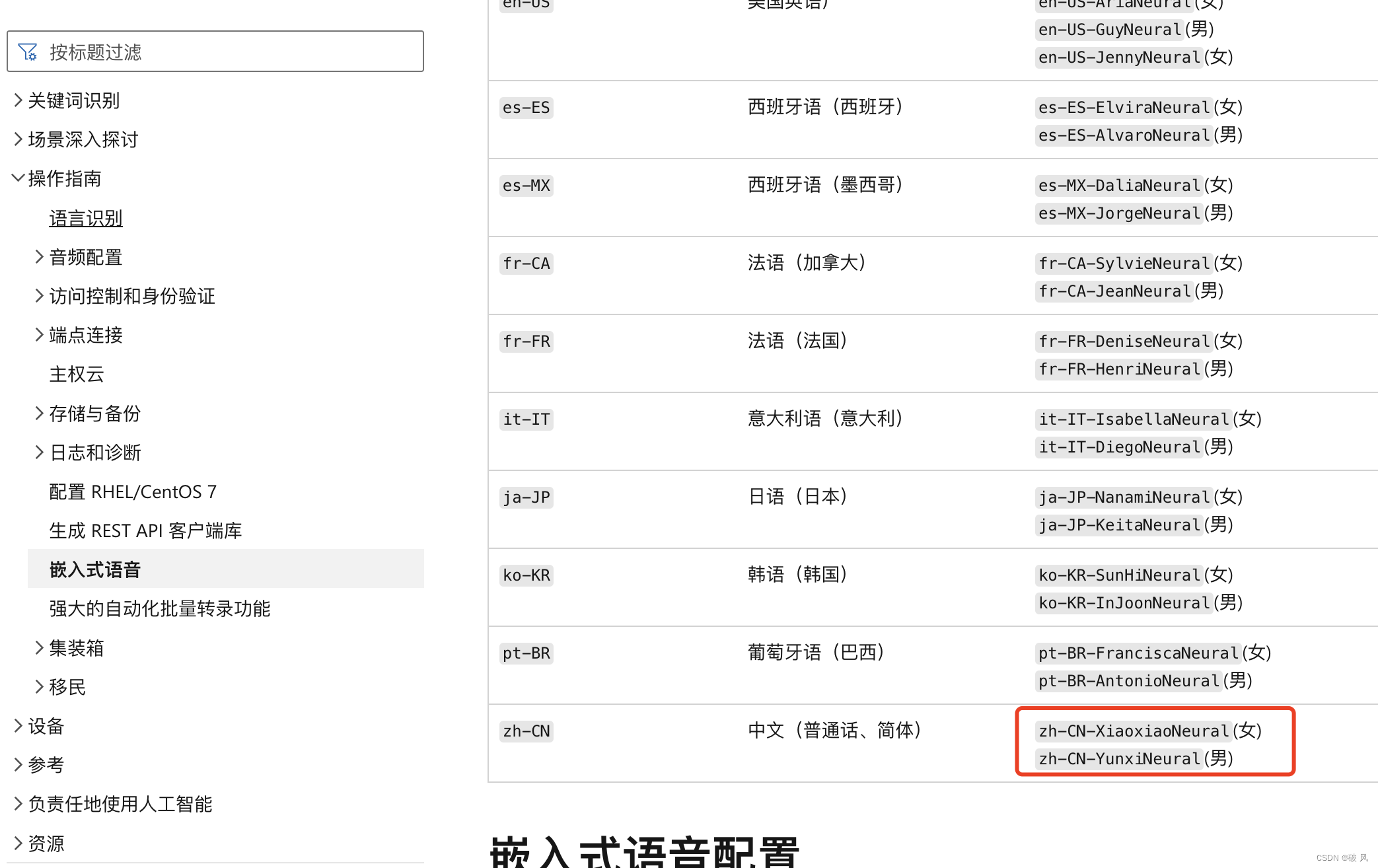
微软(TTS)文本转语音服务API实现
此博客实现与java实现微软文本转语音(TTS)经验总结_java tts_${简简单单}的博客-CSDN博客之上,首先感谢博客源码的提供,本人在上面添加了一些详细的注释,方便大家跟好的理解和使用,毕竟我已经用原文调试了一…...

防火墙firewalld
title: 防火墙firewalld createTime: 2020-10-29 18:05:52 updateTime: 2020-10-29 18:05:52 categories: linux tags: centos7上的firewalld 的使用 一、firewalld的基本启动关闭命令 启动服务------systemctl start firewalld关闭服务------systemctl stop firewalld查看状…...
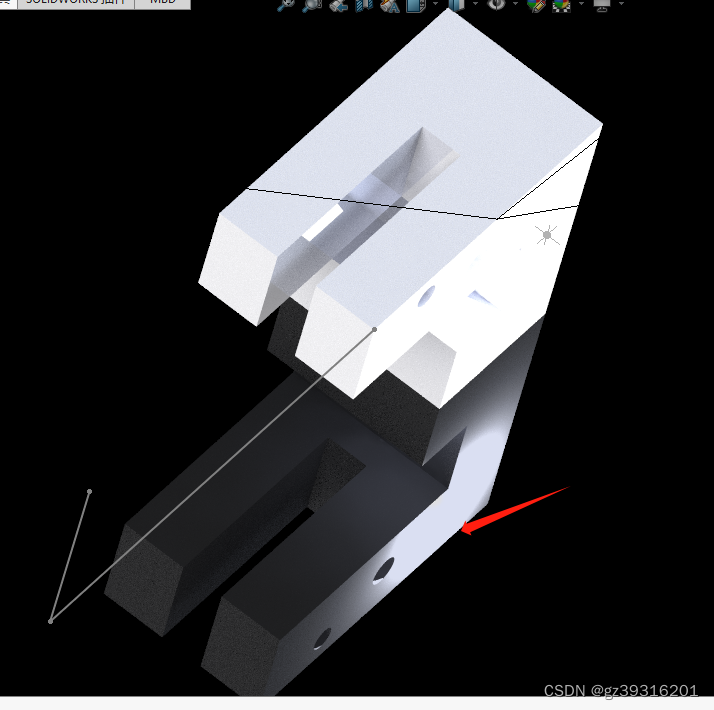
SW线光源是真实的(点光源)
点光源在渲染下真实 点光源地板反射是对的...

synchronized 学习
学习源: https://www.bilibili.com/video/BV1aJ411V763?spm_id_from333.788.videopod.episodes&vd_source32e1c41a9370911ab06d12fbc36c4ebc 1.应用场景 不超卖,也要考虑性能问题(场景) 2.常见面试问题: sync出…...

Java 8 Stream API 入门到实践详解
一、告别 for 循环! 传统痛点: Java 8 之前,集合操作离不开冗长的 for 循环和匿名类。例如,过滤列表中的偶数: List<Integer> list Arrays.asList(1, 2, 3, 4, 5); List<Integer> evens new ArrayList…...
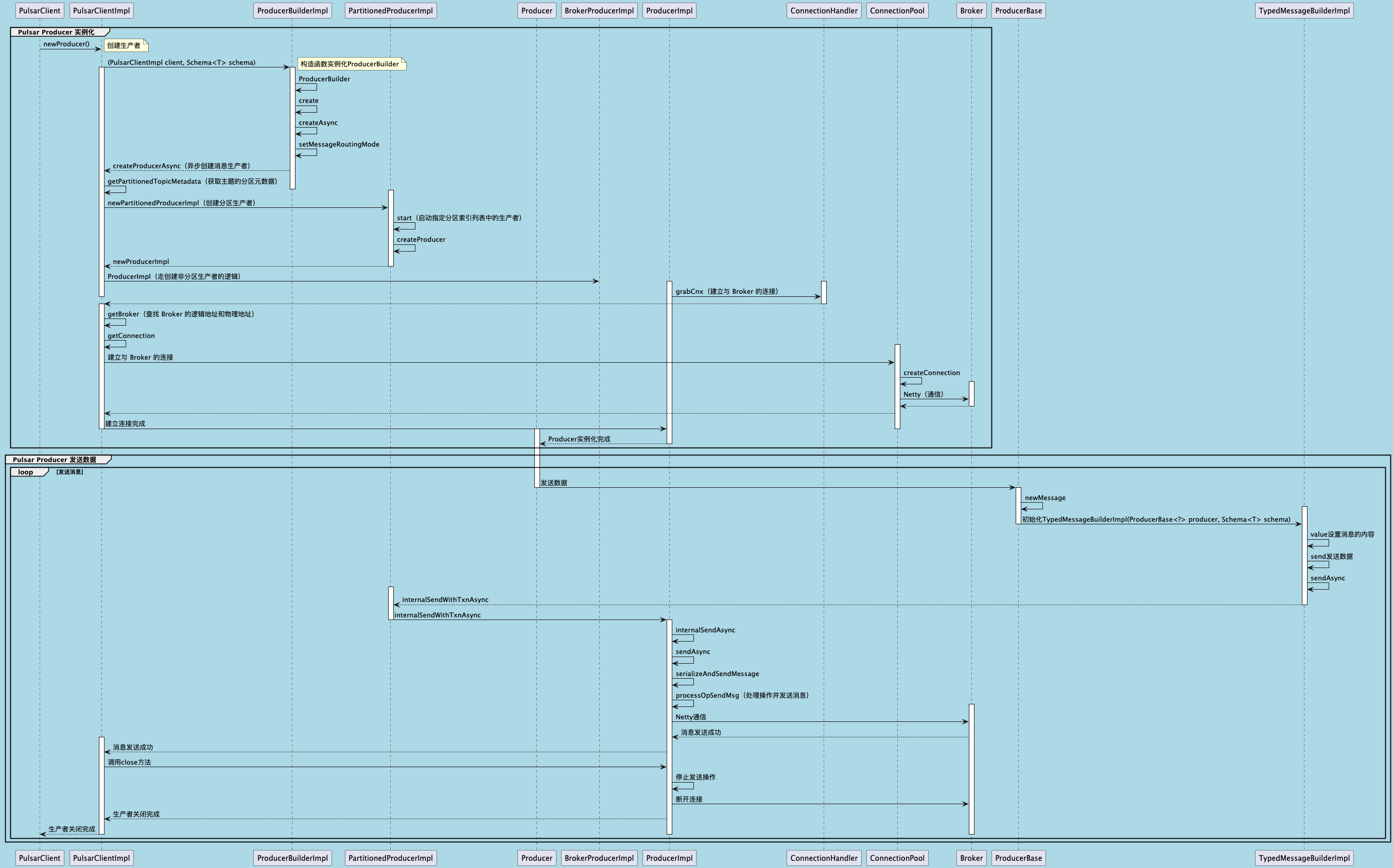
聊聊 Pulsar:Producer 源码解析
一、前言 Apache Pulsar 是一个企业级的开源分布式消息传递平台,以其高性能、可扩展性和存储计算分离架构在消息队列和流处理领域独树一帜。在 Pulsar 的核心架构中,Producer(生产者) 是连接客户端应用与消息队列的第一步。生产者…...

什么是EULA和DPA
文章目录 EULA(End User License Agreement)DPA(Data Protection Agreement)一、定义与背景二、核心内容三、法律效力与责任四、实际应用与意义 EULA(End User License Agreement) 定义: EULA即…...
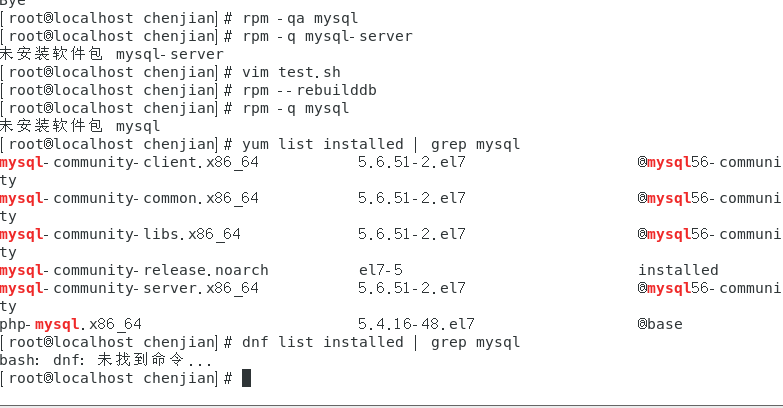
mysql已经安装,但是通过rpm -q 没有找mysql相关的已安装包
文章目录 现象:mysql已经安装,但是通过rpm -q 没有找mysql相关的已安装包遇到 rpm 命令找不到已经安装的 MySQL 包时,可能是因为以下几个原因:1.MySQL 不是通过 RPM 包安装的2.RPM 数据库损坏3.使用了不同的包名或路径4.使用其他包…...
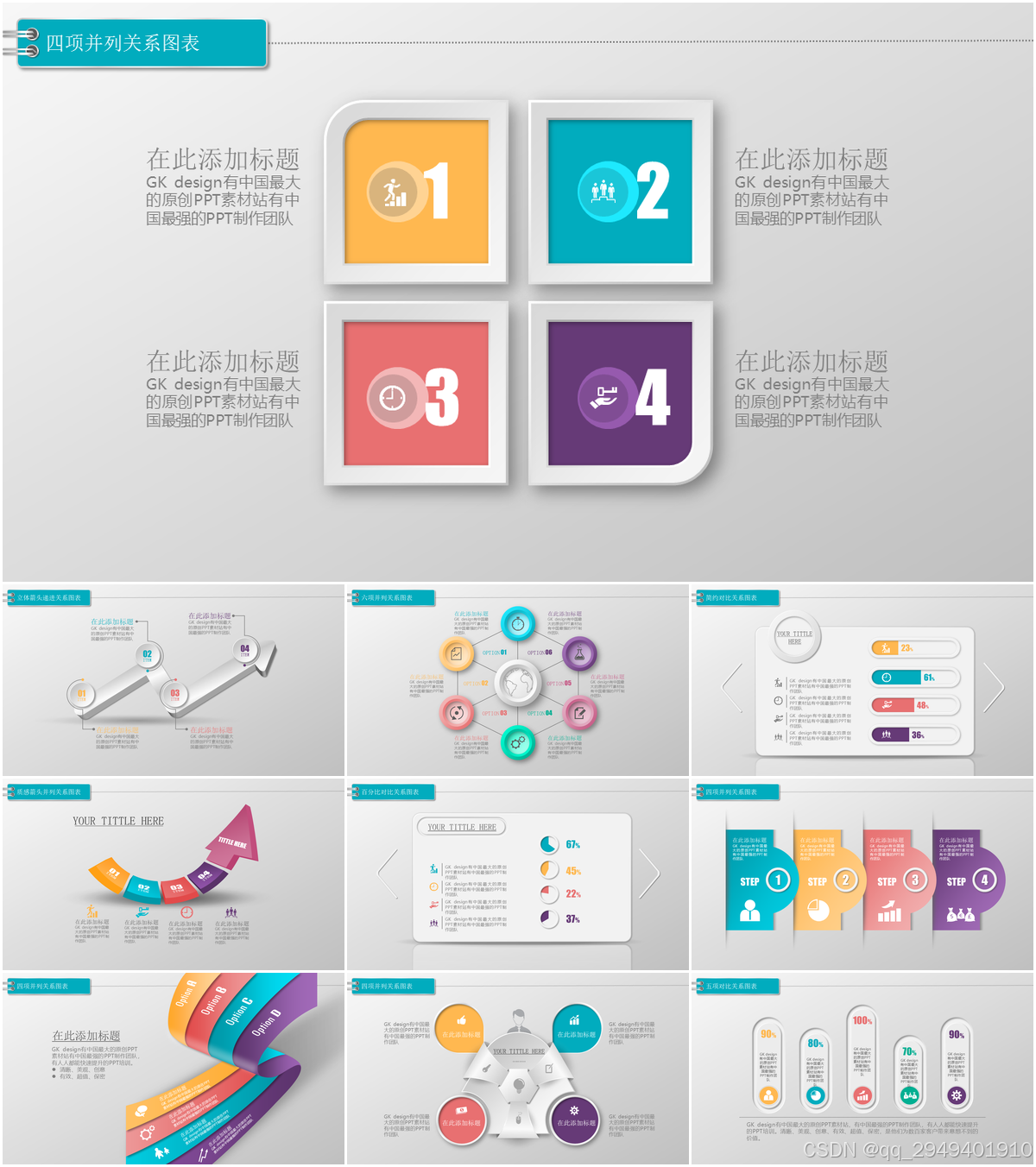
图表类系列各种样式PPT模版分享
图标图表系列PPT模版,柱状图PPT模版,线状图PPT模版,折线图PPT模版,饼状图PPT模版,雷达图PPT模版,树状图PPT模版 图表类系列各种样式PPT模版分享:图表系列PPT模板https://pan.quark.cn/s/20d40aa…...
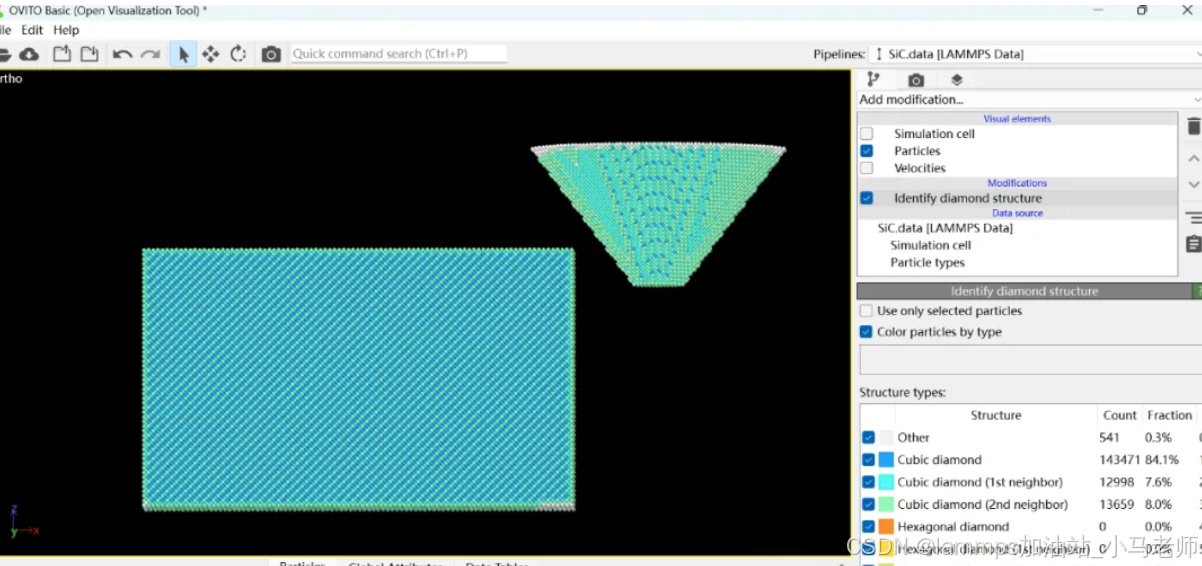
Python Ovito统计金刚石结构数量
大家好,我是小马老师。 本文介绍python ovito方法统计金刚石结构的方法。 Ovito Identify diamond structure命令可以识别和统计金刚石结构,但是无法直接输出结构的变化情况。 本文使用python调用ovito包的方法,可以持续统计各步的金刚石结构,具体代码如下: from ovito…...
免费数学几何作图web平台
光锐软件免费数学工具,maths,数学制图,数学作图,几何作图,几何,AR开发,AR教育,增强现实,软件公司,XR,MR,VR,虚拟仿真,虚拟现实,混合现实,教育科技产品,职业模拟培训,高保真VR场景,结构互动课件,元宇宙http://xaglare.c…...
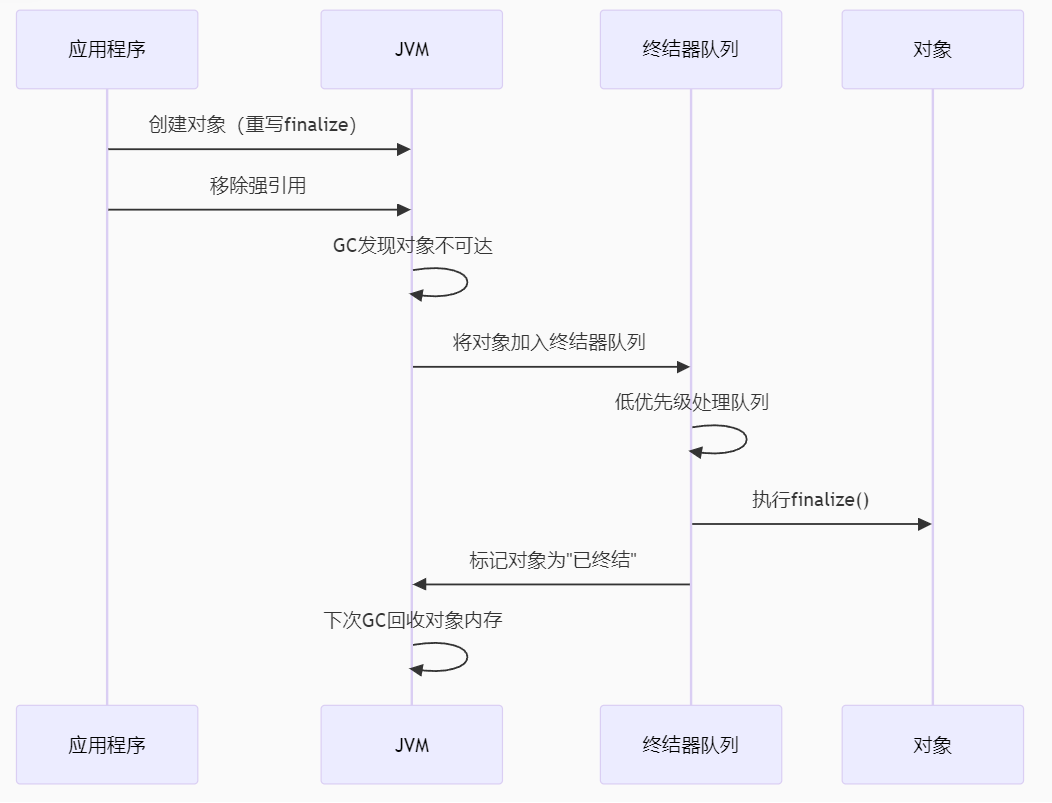
【 java 虚拟机知识 第一篇 】
目录 1.内存模型 1.1.JVM内存模型的介绍 1.2.堆和栈的区别 1.3.栈的存储细节 1.4.堆的部分 1.5.程序计数器的作用 1.6.方法区的内容 1.7.字符串池 1.8.引用类型 1.9.内存泄漏与内存溢出 1.10.会出现内存溢出的结构 1.内存模型 1.1.JVM内存模型的介绍 内存模型主要分…...

用鸿蒙HarmonyOS5实现中国象棋小游戏的过程
下面是一个基于鸿蒙OS (HarmonyOS) 的中国象棋小游戏的实现代码。这个实现使用Java语言和鸿蒙的Ability框架。 1. 项目结构 /src/main/java/com/example/chinesechess/├── MainAbilitySlice.java // 主界面逻辑├── ChessView.java // 游戏视图和逻辑├──…...
